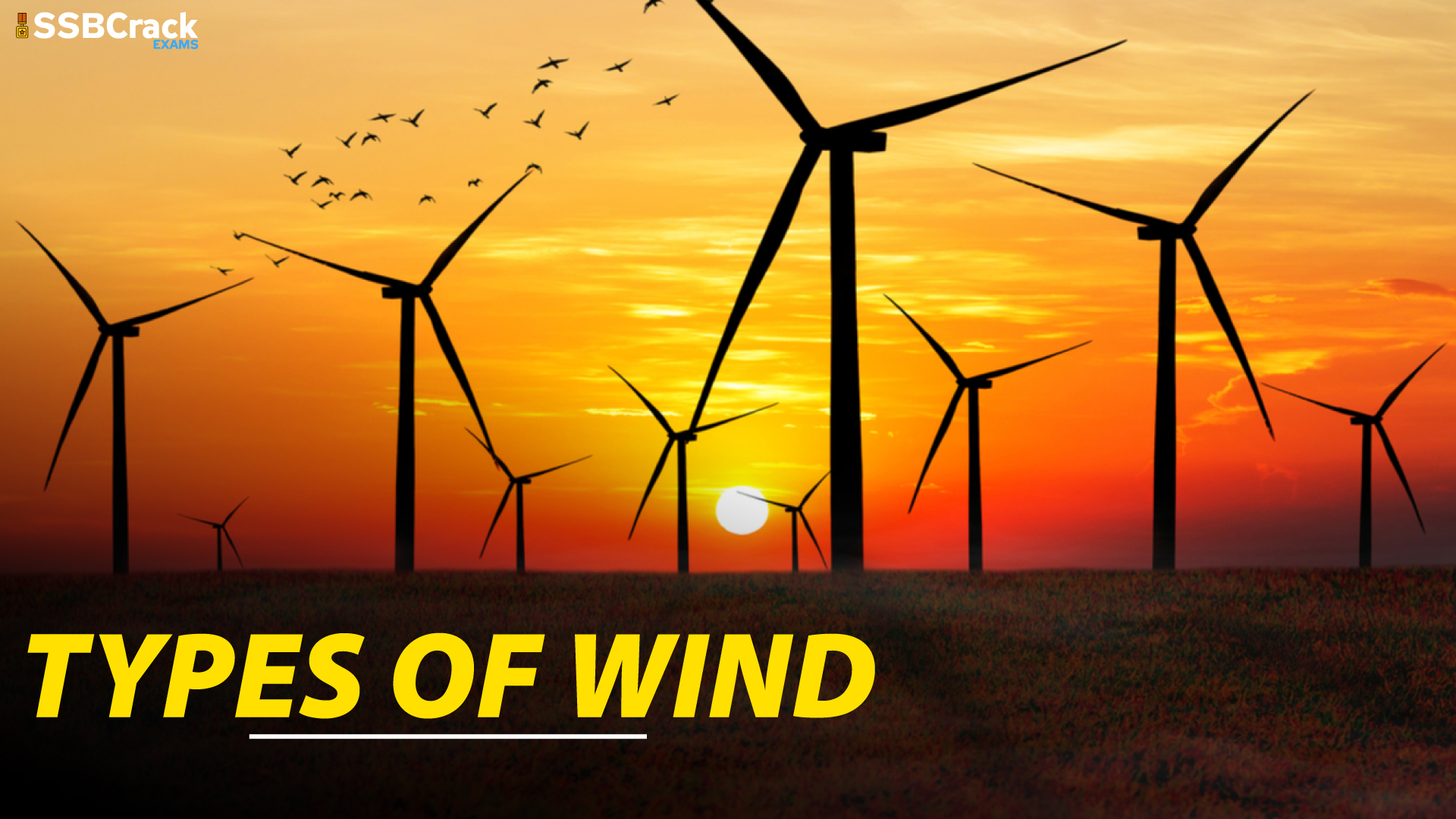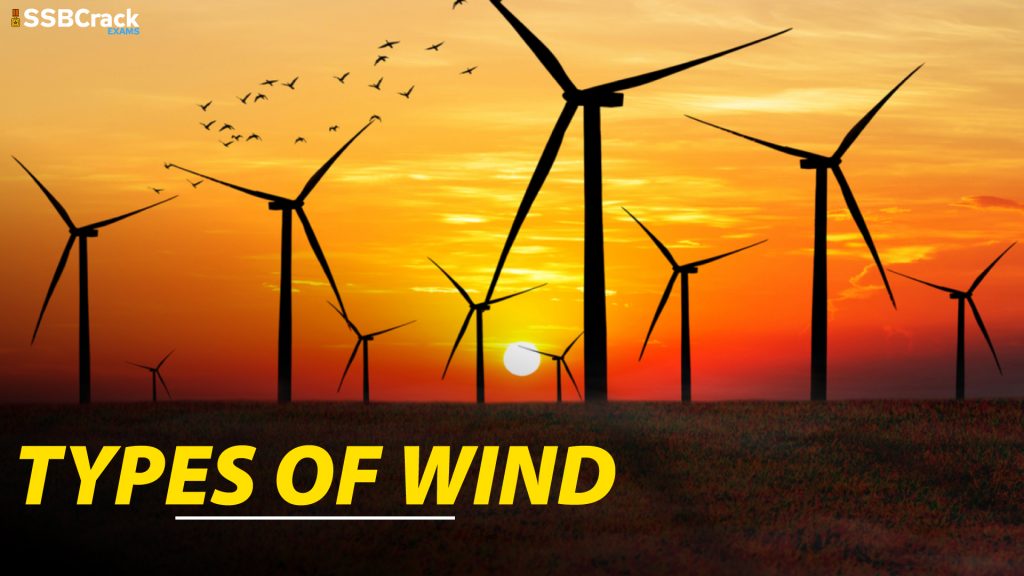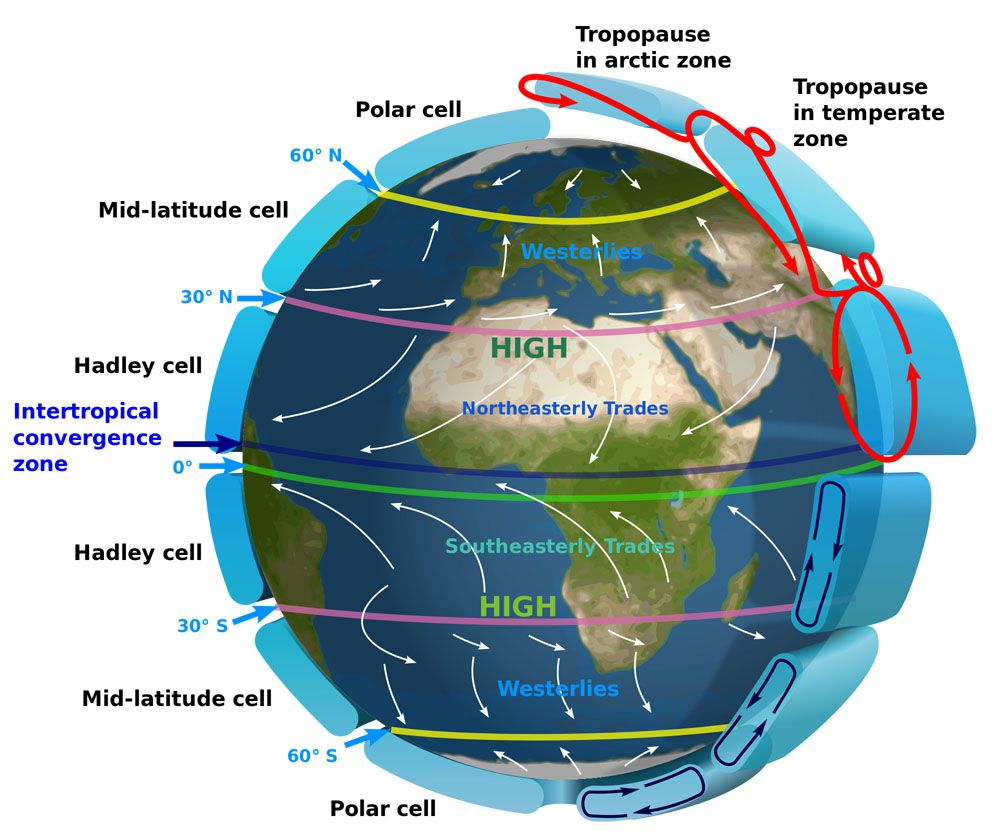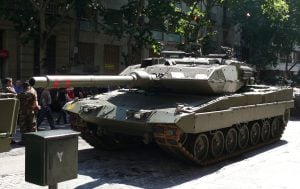WIND SYSTEM
–The pressure difference is the major cause of the genesis of the wind system. The air moves from high pressure to low pressure.
-The slope of pressure from high to low is called a pressure gradient, which is also called barometric slope.
-The imaginary joining of the points having the same pressure is called isobars. Ideally, the direction of air movements should be perpendicular to the isobars but the winds are deflected due to the Coriolis force due to the rotation of the earth.
WIND DIRECTION AND RELATED LAWS
-The Coriolis force generated due to the rotation of the earth act as a deflective force to the wind direction. Because of the Coriolis force, all the winds are deflected to the right in the northern hemisphere while they are deflected to the left in the southern hemisphere with respect to the rotating earth.
-This is referred to as Ferrel’s law. The Coriolis force is absent along the equator but increases progressively towards the pole.
– The factors that control the air movement on the earth’s surface are as follows –
*pressure gradient
*rotation of the earth
*Coriolis force
*frictional force
* centrifugal force
– The winds blowing parallel to the height of the isobars generally at the height of 600m is called geostrophic wind.
Primary wind movement
These winds include trade winds, westerlies, and polar winds.
Trade winds
–These are steady currents of air blowing from the subtropical high-pressure belt towards the equatorial low-pressure belt.
– Under the influence of the Coriolis force they flow from the North – East in the northern hemisphere and from the South – East in the southern hemisphere.
Westerlies
- The permanent winds blowing from the sub – tropical high pressure belt to the sub-polar low pressure belt in both the hemisphere is called the westerlies .
- The general direction of the westerlies is South – West to North – East in the northern hemisphere and North – West to South – East in the southern hemisphere
- Because of the dominance of the land mass in the northern hemisphere the westerlies become more complex and complicated . They become less effective during summer seasons and more vigorous during winter seasons .
- The westerlies becomes more rigorous in the southern hemisphere because of the lack of the land and dominance of the water surface.
- Their velocity increases southward and they become stormy so they are called roaring forties , furious fifties , screaming sixties .
Polar Winds
Polar winds blow from the polar high-pressure belt to the sub-polar low-pressure belt. They are North – Easterly in the northern hemisphere and South-Easterly in the southern hemisphere.
Secondary Wind Movement
Secondary wind movement includes those wind patterns that are not permanent like the primary winds. Secondary wind movements include seasonal periodic winds. Seasonal winds are the winds, which reverse their direction completely every 6 months with a change in the season. The best example is monsoon winds.
Tertiary Movements
| WIND | NATURE | REGION |
| Land breeze | Warm | Land to sea |
| Chinook | Warm | Rockies (USA $ Canada) |
| Fohn | Warm | Alps/ Europe |
| Zonda | Warm | Argentina, Chile /Andes |
| Santa Ana | Warm | USA |
| Berg | Warm | South Africa |
| Yoma | Warm | Japan |
| Sirocco | Hot | North Africa |
| Khamsin | Hot | Egypt |
| Harmattan | Hot | Sahara to Guinea |
| Brick Fielder | Hot | Australia |
| Samun | Hot | Iran |
| Norwester | Hot | New Zealand |
| Leveche | Hot | Algeria, Morocco, Spain |
| Karaburan | Hot | Tarim Basin |
| Black Roller | Hot | North America |
| Kalbaisakhi | Hot | North India |
| Sea Breeze | Cold | Sea to Land |
| Blizzard | Cold | Siberia, Canada, USA |
| Bora | Cold | Yugoslavia |
| Southerly Buster | Cold | Australia |
| Purga | Cold | Russian, Tundra |
| Marin | Cold | France |
| Cape Doctor | Cold | South African coast |
| Levant | Cold | Spain |
| Mistral | Cold | France to Mediterranen |
The readers can subscribe to SSBCrackExams to get more informative articles in their feed. All the best.
Also Read:



















